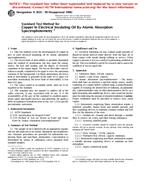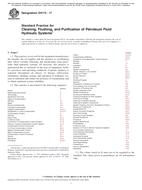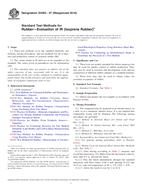1.1 These test methods cover the determination of different species of cyanides and thiocyanate in water and waste water, namely weak acid dissociable cyanide, total cyanide, and thiocyanate
1.1.1 Total Cyanide This test method determines all the weak acid dissociable cyanides and the strong metal-cyano-complexes, such as ferrocyanide [Fe(CN)
1.1.2 Weak Acid Dissociable CyanideThis test method basically determines free cyanides, as CN and HCN, and weak metal-cyano-complexes such as [Cd(CN)
1.1.3 Strong cyanide complexes, like those of iron, cobalt, etc., can be determined by difference, that is, cyanide complexes = total cyanides weak acid dissociable cyanides.
1.1.4 Thiocyanate This test method determines the thiocyanate as the difference between another measurement that includes total cyanide plus thiocyanate and the value of total cyanide, that is, thiocyanate = total cyanide plus thiocyanate total cyanide.
1.2 Cyanates and cyanogen halides are not detected. Cyanogen chloride hydrolyzes to cyanate at the pH of sample preservation (12).
1.3 Most of the organo-cyano-complexes are not measured, with the exception of the weak cyanohydrins.
1.4 These test methods apply to different types of water, waste water (raw sewage, sludge, and effluent), sludge, some industrial waste, and sediments. Sample matrixes should be evaluated by the user. The reported precision and bias (see Section ) may not apply to all samples.
1.5 The values stated in SI units are to be regarded as the standard.
This standard does not purport to address all of the safety concerns, if any, associated with its use. It is the responsibility of the user of this standard to establish appropriate safety and health practices and determine the applicability of regulatory limitations prior to use.
Product Details
- Published:
- 07/01/2006
- Number of Pages:
- 15
- File Size:
- 1 file , 220 KB
- Redline File Size:
- 2 files , 410 KB


